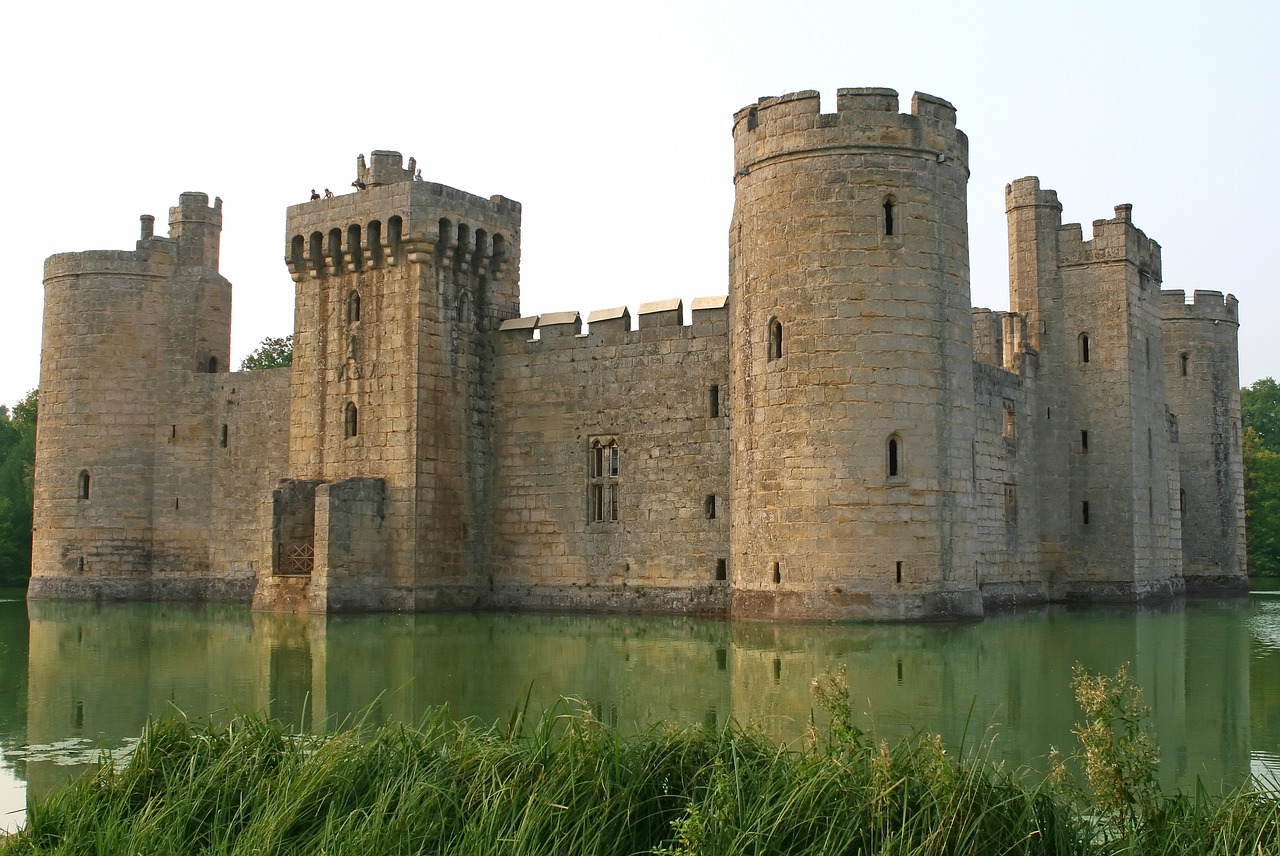Introduction
The intricate relationship between water and human health has been evident throughout history. In the realm of urban planning, few innovations have had as profound an impact on public health as the construction of aqueducts. These engineering marvels, dating back to ancient civilizations, not only revolutionized water supply but also shaped the very foundation of cities. In this exploration, we embark on a historical journey through aqueducts and their pivotal role in urban planning for the sake of public health.
The story of water and its inextricable link to human health is a narrative that spans millennia, a tale of survival, innovation, and progress. At the heart of this narrative lie the remarkable structures known as aqueducts, which have left an indelible mark on the history of urban planning and public health.
These engineering marvels, hailing from the annals of ancient civilizations, stand as monuments to human ingenuity. The construction of aqueducts was nothing short of revolutionary, as they fundamentally transformed the way cities accessed and managed their water supply. The profound impact of these aqueducts extended beyond mere infrastructure; they played an instrumental role in shaping the very fabric of urban life.
In our journey through history, we uncover the vital role aqueducts played in urban planning, especially concerning public health. These intricate systems of channels, tunnels, and arches were more than conduits for freshwater; they were lifelines for burgeoning cities. By channeling water from distant sources, often pristine mountain springs, into densely populated urban centers, aqueducts provided communities with a dependable source of clean water. This was a groundbreaking achievement, especially in times when diseases borne by contaminated water sources posed a constant threat to public health.
The legacy of aqueducts extends far beyond their engineering brilliance. They not only nourished the physical well-being of citizens but also nurtured the growth of culture, science, and civilization itself. The availability of clean water facilitated the development of thriving communities, fostering innovation, trade, and artistic expression.
As we delve into this historical journey, we gain a profound appreciation for the foresight of those who designed and built these magnificent structures. They were architects of health, guardians of public well-being, and pioneers in urban planning. Their wisdom in separating potable water from sewage laid the groundwork for modern sanitation practices, helping to combat waterborne diseases that had plagued humanity for centuries.
In today’s world, where access to clean water is often taken for granted, we owe a debt of gratitude to the aqueducts of yesteryears. They serve as a timeless reminder of the enduring connection between water and human health, and of the transformative power of innovation in the pursuit of public well-being. The lessons learned from the past continue to inform our approach to urban planning and public health, underscoring the importance of safeguarding this vital resource for generations to come.
Don’t stop here; you can continue your exploration by following this link for more details: Untitled
The origins of aqueducts can be traced to civilizations such as the Romans, Persians, and Greeks. As cities expanded and populations grew, the demand for clean and accessible water became paramount. Aqueducts, with their ability to transport water over long distances, emerged as ingenious solutions to this pressing need. The development of aqueducts was not solely about convenience but was intrinsically tied to public health.
The origins of aqueducts represent a remarkable convergence of human ingenuity and the imperative of public health, a legacy that stretches back to ancient civilizations like the Romans, Persians, and Greeks. As these early societies witnessed the inexorable growth of their cities and the expansion of their populations, a pressing need emerged—the need for a consistent, clean, and accessible water supply that could sustain urban life.
In response to this formidable challenge, aqueducts emerged as extraordinary solutions. These intricate systems of channels, pipes, and arches showcased the remarkable engineering prowess of their time. Aqueducts possessed the unique ability to transport water over vast distances, overcoming geographical obstacles and delivering this life-sustaining resource to urban centers with unprecedented efficiency.
However, it is crucial to recognize that the development of aqueducts was not merely about the convenience of accessing water; it was intrinsically tied to the preservation and enhancement of public health. In ancient cities, where water sources were often contaminated with sewage and other pollutants, access to clean water was a matter of life and death. Waterborne diseases, with their devastating toll on human health, were all too common.
Aqueducts heralded a transformation in public health. By providing a reliable source of pure water, they drastically reduced the prevalence of waterborne diseases. These marvels of engineering minimized the risk of contamination that plagued other water sources, such as open wells or rivers. Consequently, the overall well-being of urban populations improved significantly.
The impact of aqueducts extended beyond their immediate function. They laid the groundwork for the growth and prosperity of cities and civilizations. With dependable access to clean water, communities flourished, paving the way for advancements in culture, science, and technology. In essence, aqueducts played a pivotal role in shaping the very fabric of society.
The enduring legacy of these ancient aqueducts serves as a testament to the inseparable link between infrastructure, innovation, and public health. As we navigate the challenges of the modern world, including water scarcity and waterborne diseases, we can draw inspiration from the visionaries of the past. Their recognition of the fundamental importance of clean water in sustaining human life provides a timeless lesson that continues to guide our efforts to ensure a healthier, more prosperous future for all.
Should you desire more in-depth information, it’s available for your perusal on this page: Roman Aqueducts

One of the primary benefits of aqueducts was their ability to provide a consistent and clean water supply. Before their advent, urban areas often relied on local sources like wells and rivers, which were susceptible to contamination. Aqueducts tapped into pristine water sources, delivering fresh water to the heart of the city. This marked a turning point in ensuring access to safe drinking water, significantly reducing the prevalence of waterborne diseases.
The emergence of aqueducts as a technological marvel marked a transformative era in the history of urban development. One of their paramount advantages lay in their capacity to deliver a reliable and uncontaminated water supply, a stark contrast to the uncertainties of relying on local sources like wells and rivers.
In the pre-aqueduct era, urban areas struggled with the limitations of their immediate surroundings. Wells, though convenient, were susceptible to pollution and the spread of diseases due to their proximity to human settlements. Rivers, while offering a seemingly bountiful water source, were subject to seasonal fluctuations, potentially exposing communities to water scarcity during droughts and flooding during heavy rains.
Aqueducts, on the other hand, harnessed the untapped potential of distant, pristine water sources. They ingeniously transported this fresh, uncontaminated water over great distances, often through a network of elevated channels and underground conduits. The water that flowed through these aqueducts was not only consistently available but also far less prone to contamination, ensuring a much higher standard of cleanliness.
This revolutionary shift in water supply dynamics marked a turning point in human history. Access to safe drinking water ceased to be a luxury reserved for the privileged few; it became a fundamental right for urban populations. The widespread availability of clean water, facilitated by aqueducts, played a pivotal role in significantly reducing the prevalence of waterborne diseases.
In essence, aqueducts were not just engineering feats; they were a testament to human ingenuity and the prioritization of public health. They represented a commitment to the well-being of entire communities, providing a lifeline that sustained urban growth and prosperity. As we reflect on the impact of aqueducts, we are reminded that even in ancient times, the pursuit of a safe and consistent water supply was a cornerstone of civilization, a legacy that continues to shape our understanding of urban development and public health today.
To expand your knowledge on this subject, make sure to read on at this location: How New York City Found Clean Water | History| Smithsonian …

Aqueducts were more than mere conduits for water; they influenced the very layout of cities. The abundance of water allowed for the development of public baths, fountains, and sewage systems. Public baths became centers of hygiene and social interaction, while sewage systems prevented the accumulation of waste and pollutants in urban areas. The careful integration of aqueducts into urban planning bolstered public health on multiple fronts.
Aqueducts, those magnificent engineering marvels of the ancient world, were not merely utilitarian conduits for the flow of water; they were transformative forces that sculpted the very essence and layout of cities. Their influence extended far beyond quenching the thirst of urban populations. The abundant water supply they provided catalyzed a cascade of advancements in urban planning, public health, and social interaction that shaped the course of civilization.
In the heart of these urban centers, public baths emerged as iconic symbols of both hygiene and social cohesion. Enabled by the reliable water supply delivered by aqueducts, these grand bathing complexes became epicenters of cleanliness and community. They offered a respite from the demands of daily life, providing a place for individuals to cleanse their bodies and rejuvenate their spirits. Beyond mere practicality, these baths were crucibles of social interaction, where citizens from all walks of life converged, fostering connections and dialogue that transcended societal boundaries.
However, the significance of aqueducts went beyond promoting personal hygiene and social bonding. They played a pivotal role in safeguarding public health on a broader scale. The integration of sewage systems into urban planning was a direct consequence of the abundance of water that aqueducts provided. By efficiently channeling wastewater away from densely populated areas, these systems prevented the accumulation of waste and pollutants that had plagued cities in earlier eras.
The careful integration of aqueducts into urban planning was nothing short of a revolution in public health. It drastically reduced the prevalence of waterborne diseases, a scourge that had claimed countless lives in antiquity. Clean water and effective sewage systems contributed to longer and healthier lives for urban residents, marking a significant leap forward in the progress of civilization.
The legacy of aqueducts in shaping urban landscapes and fostering public health remains an enduring testament to human ingenuity and innovation. Their careful integration into the fabric of cities served as a blueprint for modern urban planning and sanitation. As we confront contemporary challenges related to urbanization, water resources, and public health, we can draw inspiration from the harmonious synergy between aqueducts and city planning. It serves as a reminder that visionary infrastructure investments can have far-reaching consequences, not only in ensuring the physical well-being of communities but also in nurturing the social fabric of our societies. In many ways, aqueducts were more than just conduits for water; they were conduits of progress and civilization itself.
For additional details, consider exploring the related content available here Roman Aqueducts

The principles underlying the inclusion of aqueducts in urban planning remain relevant in the modern world. As cities grapple with population growth, environmental sustainability, and public health concerns, the lessons from ancient aqueducts are a source of inspiration.
Modern Urban Planning: Drawing Inspiration from Ancient Aqueducts
The enduring relevance of ancient aqueducts in modern urban planning is a testament to the timelessness of their principles. As cities around the world face pressing challenges related to population growth, environmental sustainability, and public health, the wisdom of our ancestors provides valuable guidance and inspiration.
1. Population Growth and Sustainable Water Management
The rapid urbanization and population expansion witnessed today parallel the challenges faced by ancient cities. In this context, the lessons from aqueducts emphasize the importance of sustainable water management. Urban planners must focus on preserving water sources, efficiently distributing water, and implementing water-saving technologies to meet the growing demand without depleting resources.
2. Environmental Sustainability and Water Conservation
Environmental sustainability is a paramount concern in modern urban planning. Ancient aqueducts were designed to minimize waste and maximize the use of natural gravity, a concept that aligns with contemporary efforts to reduce energy consumption and lower carbon footprints. Embracing eco-friendly practices, such as rainwater harvesting and wastewater recycling, is essential for maintaining the delicate balance between urbanization and the environment.
3. Public Health and Access to Clean Water
Access to clean water remains a fundamental human right, and ensuring public health is a top priority. Ancient aqueducts revolutionized public health by delivering clean water to urban populations, effectively reducing waterborne diseases. In the modern world, this lesson resonates more than ever. Urban planning must prioritize clean water access and sanitation facilities, particularly in densely populated areas, to protect the health and well-being of residents.
4. Urban Green Spaces and Well-Being
Incorporating green spaces and water features into urban planning has a direct impact on the quality of life for city dwellers. Ancient aqueducts, with their fountains and waterways, contributed to the creation of vibrant urban environments. Modern planners can draw inspiration from this concept by designing cities that provide green oases, recreational areas, and tranquil spaces that promote well-being and mental health.
5. Resilient Infrastructure for a Changing World
As cities face the challenges of a changing climate, the resilience of infrastructure becomes crucial. Ancient aqueducts endured for centuries, in part because of their robust construction. In the modern context, building resilient infrastructure that can withstand the effects of climate change, natural disasters, and the passage of time is essential for ensuring the long-term sustainability of urban water supply systems.
Conclusion: Nurturing the Continuity of Urban Wisdom
The principles that guided the inclusion of aqueducts in ancient urban planning continue to resonate today. In our pursuit of sustainable, healthy, and vibrant cities, we find ourselves drawing on the wisdom of our forebears. By embracing these principles, modern urban planning can honor the legacy of ancient aqueducts, ensuring that cities remain centers of progress, prosperity, and well-being for generations to come.
To expand your knowledge on this subject, make sure to read on at this location: A Brief History of Water and Health from Ancient Civilizations to …

Sustainable water management is a core consideration in modern urban planning. The preservation of water sources, responsible water use, and efficient distribution systems are essential for meeting the needs of growing populations while safeguarding the environment.
Sustainable water management is not just a buzzword but an indispensable pillar of modern urban planning. In an era marked by rapid urbanization and population growth, the delicate balance between meeting the ever-increasing water demands of cities and safeguarding the environment has never been more critical.
At the heart of sustainable water management lies the preservation of water sources. These natural reservoirs, such as rivers, lakes, and aquifers, are the lifeblood of urban centers. They provide the essential raw material for our daily needs, from drinking water and sanitation to industrial processes and agriculture. Recognizing the finite nature of these resources, urban planners are increasingly focused on conservation efforts, ensuring that these sources remain robust and resilient in the face of climate change and other pressures.
Responsible water use is another cornerstone of sustainable urban planning. It requires a shift in mindset from viewing water as an unlimited commodity to recognizing it as a precious and finite resource. Cities are implementing various measures to promote responsible water use, including efficient plumbing systems, water-saving technologies, and public awareness campaigns. By reducing water waste and promoting responsible consumption, urban areas can stretch their available water supplies further while minimizing their environmental impact.
Efficient distribution systems play a pivotal role in sustainable water management. A well-maintained and optimized water infrastructure ensures that water is transported from source to consumer with minimal losses due to leaks or inefficiencies. Moreover, incorporating advanced technologies such as smart meters and real-time monitoring allows for more precise control and management of water distribution, thereby minimizing waste and optimizing resource allocation.
The challenges of modern urban planning go beyond meeting immediate water needs. They extend to long-term sustainability and resilience. Climate change poses a significant threat to water availability, with more frequent and severe droughts and floods becoming commonplace. Sustainable urban planning takes into account these climate-related risks and aims to develop adaptive strategies, such as water harvesting, recycling, and diversification of water sources, to ensure a stable supply even in the face of unpredictable conditions.
In summary, sustainable water management is not just a desirable aspect of modern urban planning; it is an imperative. It requires a comprehensive approach that encompasses the preservation of water sources, responsible water use, and efficient distribution systems. By embracing these principles, cities can not only meet the immediate needs of their growing populations but also ensure the well-being of future generations and the health of the planet. In an era of increasing environmental awareness and concern, sustainable water management is a testament to our commitment to creating cities that thrive in harmony with the natural world.
For additional details, consider exploring the related content available here One New York City: One Water

Incorporating green spaces and water features into urban planning promotes well-being. Parks, gardens, and urban waterways enhance the quality of life for residents, providing spaces for recreation, relaxation, and improved mental health.
Incorporating green spaces and water features into urban planning isn’t just about aesthetics; it’s a profound investment in the overall well-being of a community. By weaving parks, gardens, and urban waterways into the fabric of a city, we go beyond mere beautification and offer residents a multitude of tangible benefits.
These green sanctuaries become more than just places of visual respite; they serve as vibrant hubs for the community. In parks, families gather for picnics, children play, and friends meet for leisurely strolls. Such spaces become arenas for fostering social bonds and a sense of belonging, nurturing a strong sense of community.
Gardens, with their serene beauty and aromatic blossoms, offer a haven of tranquility amidst the urban hustle and bustle. They become spaces where individuals can escape the stresses of daily life, practice mindfulness, or simply find solace in the embrace of nature. In doing so, they contribute to improved mental health, offering a respite from the anxieties that often accompany city living.
Urban waterways, thoughtfully integrated into cityscapes, serve as more than conduits for water; they are arteries of life. They not only enhance the aesthetic appeal of an area but also provide recreational opportunities like kayaking, fishing, or waterfront dining. The soothing sound of flowing water brings a sense of calm, reducing noise pollution and promoting relaxation.
Furthermore, green spaces and water features offer environmental benefits by mitigating the urban heat island effect, improving air quality, and supporting biodiversity. They contribute to a more sustainable and resilient urban environment.
In essence, incorporating these elements into urban planning isn’t a luxury; it’s a necessity for modern cities. It’s an investment in the physical and mental well-being of residents, a commitment to community building, and a testament to a city’s forward-thinking approach to urban development. It’s a step toward creating cities where people thrive, finding balance in the harmonious coexistence of nature and modern life.
You can also read more about this here: JB 2011-2020 Prize Winners – University of Virginia School of …

The legacy of aqueducts in urban planning endures as a testament to the intimate connection between water and health. As cities evolve and face contemporary challenges, the wisdom of our ancestors guides us. By embracing sustainable water management, prioritizing public health, and creating vibrant urban spaces, modern urban planning can continue the tradition of aqueducts, ensuring that cities remain hubs of health and well-being for generations to come.
The legacy of aqueducts in urban planning endures as a testament to the intimate connection between water and health. As cities evolve and face contemporary challenges, the wisdom of our ancestors guides us. By embracing sustainable water management, prioritizing public health, and creating vibrant urban spaces, modern urban planning can continue the tradition of aqueducts, ensuring that cities remain hubs of health and well-being for generations to come.
In the modern era, the challenges of urbanization have evolved. Rapid population growth, climate change, and environmental degradation pose new and complex obstacles to maintaining clean and accessible water sources. However, the lessons learned from the Romans and their aqueducts remain as relevant as ever.
Sustainable water management practices, including efficient water distribution, treatment, and conservation, are essential components of contemporary urban planning. By implementing advanced technologies and eco-friendly infrastructure, cities can ensure a reliable supply of clean water while minimizing environmental impact. This not only supports the health of urban residents but also safeguards the natural ecosystems that provide these precious water resources.
Furthermore, public health remains at the forefront of urban planning considerations. Ensuring that water is safe for consumption and sanitation is a fundamental responsibility. Modern cities must invest in state-of-the-art water treatment facilities, robust sanitation systems, and education campaigns to promote water hygiene. These measures not only prevent the spread of waterborne diseases but also contribute to the overall well-being of urban populations.
Moreover, creating vibrant and accessible urban spaces is crucial for the health and happiness of city dwellers. Just as ancient aqueducts provided water for public baths, fountains, and gardens, contemporary urban planning should prioritize green spaces, recreational areas, and amenities that enhance the quality of life. Access to clean water for drinking, recreation, and relaxation remains a cornerstone of urban well-being.
Incorporating sustainable water management practices, prioritizing public health, and designing cities with human well-being in mind are the modern-day equivalents of the Roman aqueducts. These principles not only pay homage to our historical legacy but also ensure that cities remain thriving, healthy, and sustainable environments for generations to come. In doing so, we carry forward the wisdom of the past to shape a brighter future for urban communities worldwide.
Explore this link for a more extensive examination of the topic: NEW YOrK
More links
Additionally, you can find further information on this topic by visiting this page: A Brief History of Water and Health from Ancient Civilizations to …
